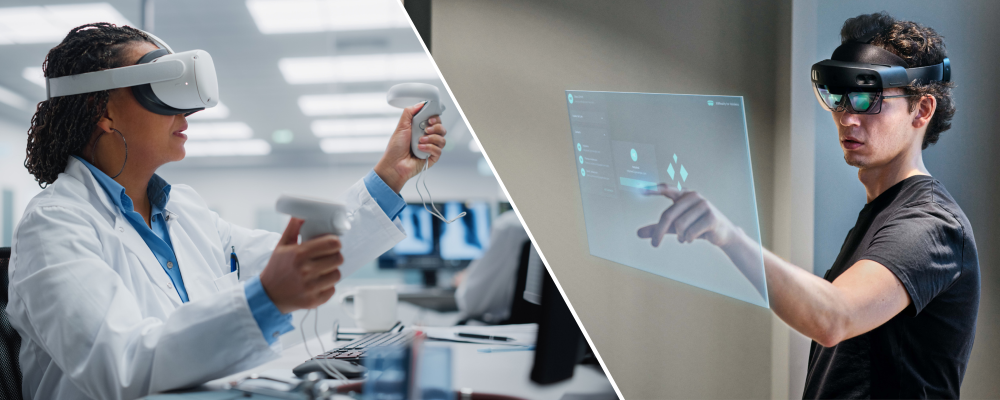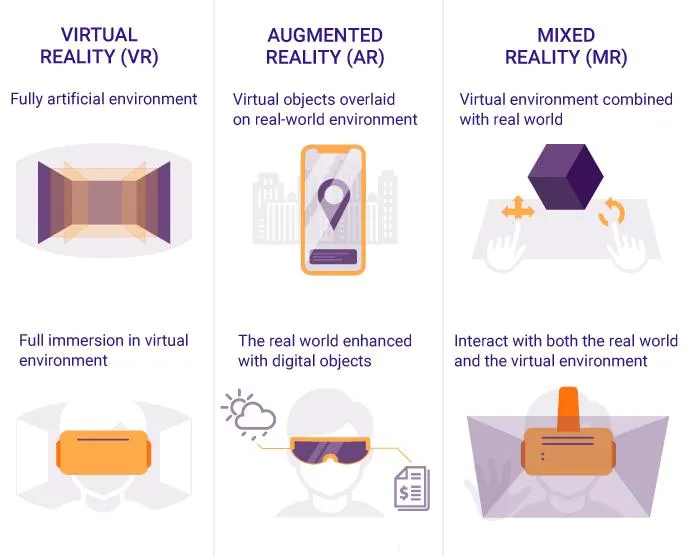Navigating Realities: A Deep Dive into AR vs VR Technology
Embark on a journey through the realms of Augmented Reality (AR) vs Virtual Reality (VR) technology as we unravel the tech tapestry that shapes our digital future.
Welcome to the era of immersive technologies! Augmented Reality (AR) and Virtual Reality (VR) have transcended the boundaries of fiction, becoming integral parts of various industries. Let’s explore the distinctions and synergies between these two groundbreaking technologies.

Understanding Augmented Reality (AR)
Definition and Basics
AR blends the virtual and real worlds, enhancing our perception of reality. It overlays digital information onto our physical surroundings, creating a composite view.
Real-world Applications
Gaming: Augmented reality has transformed the gaming landscape, bringing digital elements into the real world. Think Pokémon GO, where your neighborhood becomes a gaming arena.
Retail: In retail, AR offers interactive shopping experiences, allowing customers to visualize products in their homes before purchasing.
Healthcare: From surgical navigation to patient education, AR is revolutionizing healthcare by providing real-time data and enhancing medical procedures.
Pros and Cons
Pros:
- Enhances real-world experiences
- Improves situational awareness
- Wide range of applications
Cons:
- Relies on external hardware
- Limited immersion compared to VR
- Privacy concerns in some applications
User Experiences: AR provides users with a seamless blend of digital and physical realities. Interactive elements enrich user engagement, making AR an accessible and user-friendly technology.

Venturing into Virtual Reality (VR)
Definition and Basics
VR immerses users in entirely virtual environments, shutting out the physical world. It often requires dedicated hardware like VR headsets to create a fully immersive experience.
VR in Different Industries
Entertainment: From virtual concerts to immersive storytelling, VR is reshaping the entertainment industry, providing unparalleled experiences.
Education: In education, VR transports students to historical events, distant planets, or the microscopic world, making learning more engaging.
Training and Simulation: Industries like aviation and healthcare use VR for realistic training simulations, enhancing skill development.
Pros and Cons
Pros:
- Complete immersion in virtual worlds
- Ideal for training and simulations
- Increasingly accessible VR hardware
Cons:
- Requires specialized equipment
- Potential for motion sickness
- Limited real-world interaction
Immersive Experiences
VR offers users a sense of presence in virtual worlds. Whether exploring distant planets or collaborating in virtual offices, the immersive nature of VR is unparalleled.
AR vs VR: A Head-to-Head Comparison
Technological Differences
| Aspect | AR | VR |
|---|---|---|
| Interaction with Reality | Overlays digital on reality | Immerses users in virtual worlds |
| Hardware | Less specialized | Requires dedicated VR headsets |
| Applications | Diverse | Concentrated in specific sectors |

Use Cases and Applications
Overlapping Areas
- Training and simulations
- Interactive storytelling
Unique Applications
- AR in retail and gaming
- VR in immersive education and entertainment
Market Trends and Adoption Rates
Despite unique features, both AR and VR are gaining traction across industries. AR is prevalent in mobile applications, while VR is becoming more accessible with the development of standalone headsets.
Choosing the Right Reality
Considerations for Developers: Developers must weigh factors such as target audience, application requirements, and hardware accessibility when choosing between AR and VR.
Practical Considerations for Consumers: Consumers should consider the intended use, available space, and comfort when selecting AR or VR experiences.
Future Trends and Innovations: The future holds exciting possibilities, with advancements in AR glasses, haptic feedback in VR, and more seamless integration of these technologies into our daily lives.
Challenges and Opportunities
Technological Challenges
- Overcoming hardware limitations
- Enhancing real-world integration
Ethical and Privacy Considerations
- Addressing concerns related to data privacy
- Ensuring responsible use in public spaces
Emerging Opportunities in AR and VR
- Integration with 5G technology
- Collaboration with Artificial Intelligence for enhanced experiences
The Social Impact
AR and VR in Social Interactions
- Virtual social gatherings
- Collaborative virtual workspaces
Cultural and Ethical Implications
- Impact on real-world interactions
- Addressing ethical concerns in AR and VR content
Expert Insights and Opinions
Quotes from Industry Experts
- “AR and VR are not just technologies; they’re gateways to new dimensions.” – Tech Visionary
- “Balancing immersion and real-world interaction is the key to unlocking the full potential of AR and VR.” – VR Developer
Perspectives on the Future of AR and VR
Experts share their visions for the future, discussing potential breakthroughs, challenges, and societal impacts.
In this journey through AR and VR, we’ve witnessed the transformative power of these technologies. As we navigate the evolving landscape, let’s embrace the endless possibilities that AR and VR bring to our digital doorstep.




